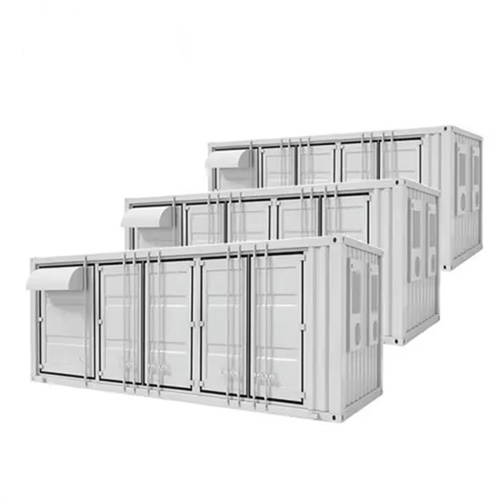About Multiple measures to build microgrid projects
As the photovoltaic (PV) industry continues to evolve, advancements in Multiple measures to build microgrid projects have become critical to optimizing the utilization of renewable energy sources. From innovative battery technologies to intelligent energy management systems, these solutions are transforming the way we store and distribute solar-generated electricity.
When you're looking for the latest and most efficient Multiple measures to build microgrid projects for your PV project, our website offers a comprehensive selection of cutting-edge products designed to meet your specific requirements. Whether you're a renewable energy developer, utility company, or commercial enterprise looking to reduce your carbon footprint, we have the solutions to help you harness the full potential of solar energy.
By interacting with our online customer service, you'll gain a deep understanding of the various Multiple measures to build microgrid projects featured in our extensive catalog, such as high-efficiency storage batteries and intelligent energy management systems, and how they work together to provide a stable and reliable power supply for your PV projects.
6 FAQs about [Multiple measures to build microgrid projects]
What is a microgrid project?
The primary goal for microgrid projects is to increase the energy resilience and enhance the ability to serve an installation’s electrical loads during a contingency situation.
What information should be included in a microgrid project?
The key data includes electrical drawings, information on critical loads, utility load information, and utility cost information. Once the background information has been reviewed, the project team should begin initial stakeholder consultations. Implementing a successful microgrid requires participation by many stakeholders.
How can microgrid assets improve project economics?
Utilize microgrid assets to improve project economics through opportunities from cost savings with generation and grid-connected services. 11 It could also be useful to plan for tiers of criticality or other ways of prioritizing which installation loads are most critical and cannot be moved or transferred to a different installation.
How do you plan a microgrid?
Define site goals and needs. An agency or site will first need to identify energy goals, critical loads, and resilience needs. Evaluate on-site DERs and controls systems. Evaluate existing on-site DERs and controls systems to determine how they may be used in a planned microgrid. Microgrids are deeply integrated with existing infrastructure.
How can a microgrid improve sustainability?
Many locations also have renewable energy generation sources such as PV panels or wind turbines that provide variable power output. These can be good resources to add into a microgrid to improve the ability to sustain long outages, as they do not depend on fuel deliveries and they increase the overall sustainability of the system.
What are microgrids & how do they work?
Microgrids (MGs) deliver dependable and cost-effective energy to specified locations, such as residences, communities, and industrial zones. Advance software and control systems allow them to function as a single unit and to manage the demand and supply of energy in real-time 1.
Related Contents
- Microgrid Monitoring Communication Measures
- How to build a microgrid yourself
- How to Build a Microgrid Studio
- Equipment needed to build a microgrid
- Who will build a microgrid
- Microgrid projects today
- 660W double-glass photovoltaic panel multiple
- Multiple thickness errors of photovoltaic brackets
- Multiple inputs for photovoltaic inverters
- Photovoltaic panels multiple groups series and parallel connection method diagram
- Photovoltaic multiple inverter installation diagram
- Multiple photovoltaic inverters


